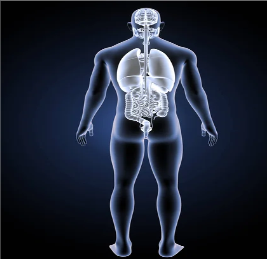Visceral Manipulation
- kelsolson
- Jan 30, 2024
- 3 min read
Visceral Manipulation
VM1
In mid November 2023, I took my first of a four-part course in Visceral Manipulation. In VM1 we learned about the Liver, Abdominal Sphincters, Duodenum, Gallbladder, Small Intestine, Stomach, and Large Intestine.
Visceral Manipulation is a manual therapy, utilizing gentle and specific techniques that help to encourage normal movement of the organs. As well as their connective tissues, and other areas of the body where this motion has been impaired. For an organ to be healthy, and have optimal function-there needs to be space to allow for this. An organ that is in good health, has proper physiologic motion. This motion depends on the membranes which envelop the organ, fascia, ligaments and other tissues which bind it to the rest of our being.
These motions can be divided into two categories:
1) Visceral Mobility: the movement of the organ in response to voluntary movement (walking, bending etc.), or the movement of the organ in response to the diaphragm during inhalation and exhalation.
2) Visceral Motility: which is the inherent motion of the viscera/organs themselves. Each organ moves in a particular direction, along particular axis within the body.
All viscera are contained within one of three cavities. The skull, thorax, or abdomen. What I really appreciate about this therapy is its view of the body, and its systems as a whole. It’s really interesting to take a look at the organs and see how their connections through fascia, ligaments etc. connect it to other parts of the body. An organ can be in contact with a muscular wall (liver-diaphragm), with the skeleton (lung-thorax), or with another organ (liver-kidney). As with the stomach, it connects to the diaphragm through the Gastrophrenic ligament, the spleen through the Gastrosplenic ligament, the liver through the Hepatogastric ligament, the transverse colon through the greater omentum, and the duodenum through the Hepatoduodenal ligament. These neighboring organs then attach to other parts of the body as well, further increasing the reach and interconnectedness of the body.
The ligaments which bind viscera are different from those we find within skeletal structures. Ligaments of the abdominal organs are folds of Peritoneum, which is a membrane that secretes fluid that acts as a lubricant for the organs within the abdominal cavity. These ligaments secure viscera to the wall of the cavity-or two organs together. Their role is to keep the viscera in its proper place.
In this modality, we tune into the rhythm and movement of each organ, and ensure that it is moving without restriction. A visceral restriction refers to a decrease in motion, where an organ loses all, or part of its ability to move. When there are restrictions within the abdominal cavity, it doesn’t allow for proper movement and expansion of the organs within this space. When the tissues have become inflamed from things like: motor vehicle accidents, (whiplash), environmental toxins, stress, surgeries, infection etc. this healed tissue can often times be a bit more inelastic than before-creating an immobility. This doesn’t allow for proper blood flow, or drainage. When a restriction forms, the organ will now move around the point of fixation and this becomes the new axis of movement. Circulation of blood and lymph through the organs can then be diminished. The organ then loses its rhythm, vitality, and ability to properly function.
Visceral Manipulation focuses on the fascia and ligaments surrounding the organs, which helps the body initiate its own healing processes. Our bodies innately want to heal, and can make some pretty immense shifts, if they are given the right tools. By facilitating proper movement around these organs, this can help to free structures that were previously impeding on proper arterial/venous blood flow, and free structures from each other. Fostering them to operate at their optimal level of function.
What do I wear to my appointment? I would recommend pants with an elastic or stretchy waist band, so we can access the abdomen for certain mobilizations. You can remain fully clothed for your appt, I just need to have access to abdomen/rib cage for the purposes of landmarking, and treatment of the organs. It works best if I am able to have contact directly on the skin while working the viscera.
If you would like to read a bit more on this therapy, I have included some links below:
What is Visceral Manipulation:https://discovervm.com/The founder:https://www.barralinstitute.com/about/jean-pierre-barral.php
Research:https://www.barralinstitute.com/docs/VM-Research-Flyer.pdfVisceral Manipulation for the treatment of Consitpation:https://www.iahe.com/docs/articles/Visceral-Manipulation-A-Manual-Therapy-Technique-for-Relieving-Constipation.pdf
Sources:
Visceral Manipulation 1: Barral Institute-Physiological and Clinical Applications of Visceral Manipulation: Ron MarriottiVisceral Manipulation: Jean-Pierre Barral & Pierre MercierBarralinstitute.com








Comments